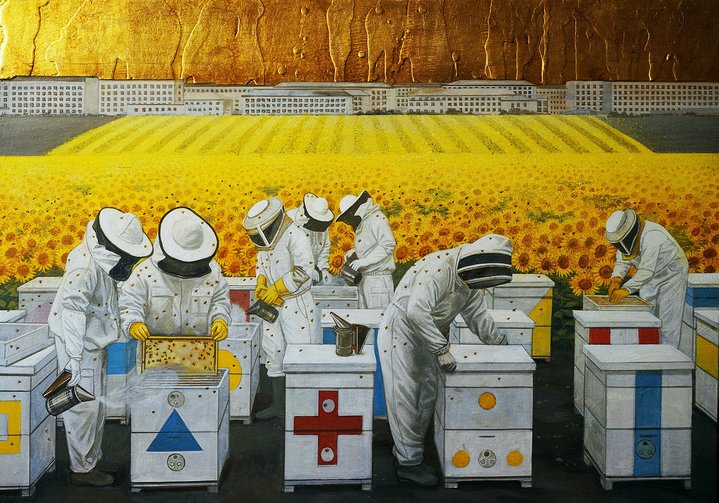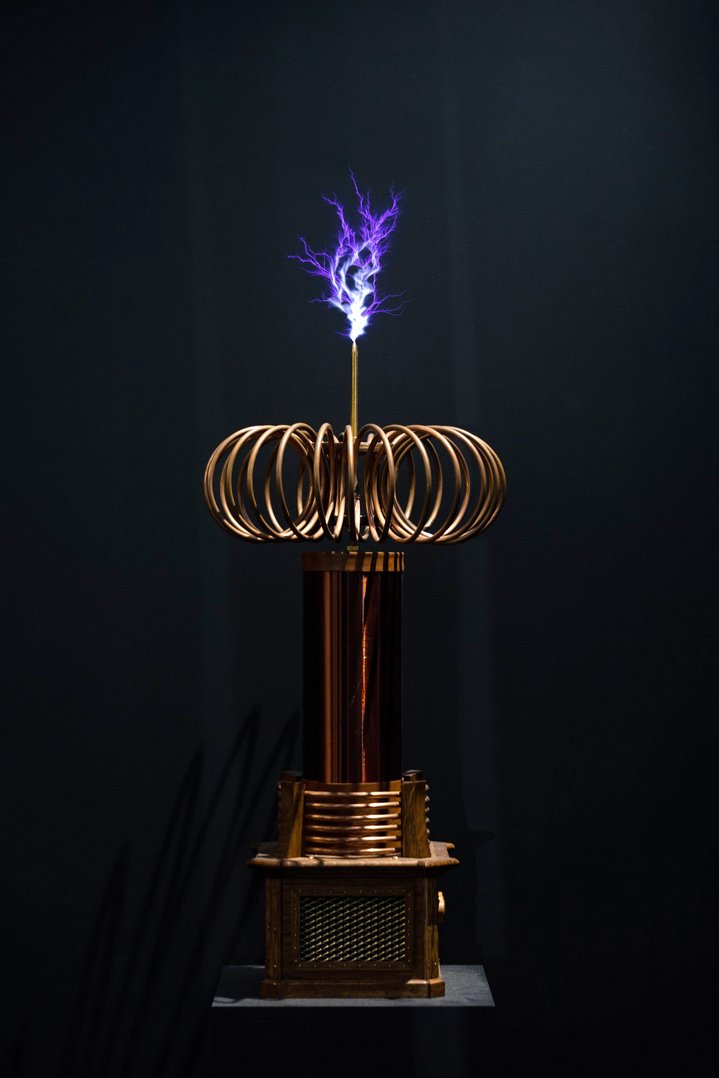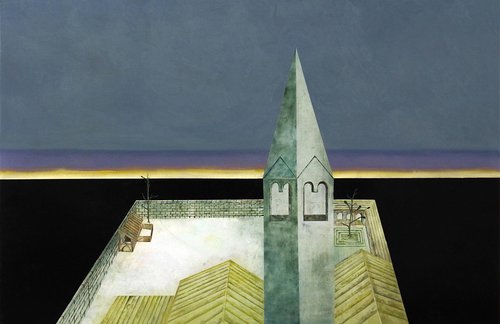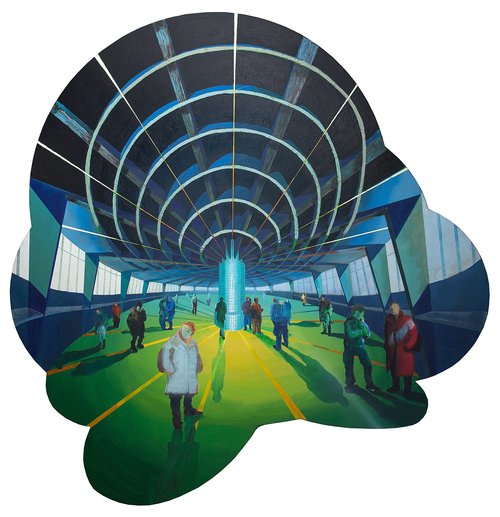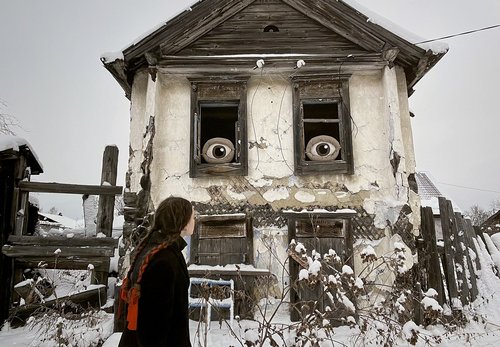Artists Submerged in Conspiracy Thinking

Miķelis Fišers. Multidimensional Entities Cut Up Their Avatars Before Evacuation from Planet Earth, 2017. Paint and carving on polished wood, 21×29.5 cm. Courtesy of Triumph Gallery
A new exhibition at Moscow’s Triumph Gallery offers the viewer a puzzling entrée into the dark and mysterious world of conspiracies. Russian art critic Sergey Khachaturov draws the curtain back to see what lies behind.
The current exhibition at Moscow’s Triumph Gallery demands to be solved as a crossword puzzle, and it’s exciting. Curator Marina Bobyleva and her assistant Artur Knyazev have written an academic text, as fascinating as it is complicated, which describes conspiracy theories and conspiracy theories in a semiotic (sign) system. According to (post/meta) modernist ideas, conspiracy theory first became relevant when signs and what is signified departed from each other and began to shine in a fractal system of multiplying mirrors. Nineteenth century positivism led to a fetishist obsession with the sign and the replacement of systemic logic by a new dense mythology, densely kneaded with the lowest Philistine complexes and instincts. Themes of hidden power in critical times, among them the present one, evoke the destructive forces in society. These forces feed off hostile ignorance, and on the desire to find someone to blame, to explain everything simply and to finally catch a sign that floats in space, split off from its meaning. This is how the image of an invisible and omnipotent external enemy who is always plotting against ‘us’ is cultivated. The émigré Russian philosopher Ivan Ilyin linked it to the theme of the ‘world behind the scenes’, the collective ‘West’ that humiliates and offends Mother Russia.
All these themes are fascinating and have been well expressed by the curators in the accompanying articles. But they do not help us much in trying to capture an image of the exhibition itself. I think that for an art project about conspiracy the motif of a curtain as a material object meant to conceal and hide a theme flickering within its folds is important. And the more interesting the image is, the more it turns to the language of art itself, rather than illustrating an externally borrowed idea about secret agents and enemies.
In this sense, the objects and installations stand out in this show, which are to some extent expeditions across the surface of an imaginary backstage, with its folds, cracks, stains and moth-eaten dots. The journey along the surface of the world's backstage is a formula for object-oriented art, in which the object is never revealed to us, but clues to its discovery can be observed in the most inconspicuous things. Ruslan Polanin (b.1988), for example, attached tree mushrooms to the walls of the gallery, where there were wire outlets. They eavesdrop and become breeding grounds for espionage. Anna Tagantseva-Kobzeva (b.1990) creates painted and carved patterns on various surfaces and objects. They form curtains, that separate us from magical worlds with rituals, the key as to how to read them is hidden from us. But we can fantasise about them endlessly. And Tania Prystavka (b.1995) in her installation ‘Truth Museum’ reproduces the interior of an exhibition with various objects covered in a network of crackled craquelure. These craquelures become portals to other worlds.
Burlesque and carnival themes of other worlds and humanoids are successful when they also involve the territory of art itself, with its archive of pictorial wonders, theatrical backstage and visual charades. Gosha Ostretsov (b. 1967), Anton Kushaev (b. 1983) and the Latvian maestro Mikelis Fisers (b. 1970) create such a carnival story about the wonders of perception and other worlds, ufology. Tricks made by craftsmanship help to avoid pathos, achieve charm, wit and lightness just in the territory of art itself. Ostretsov is helped by theatrical masks and Soviet science fiction illustrations. Fisers by his Baltic souvenirs carved on black lacquered wooden boards. Kushaev – by anamorphosis of baroque ornaments.
Soviet realist painting is another intriguing object that distances itself from us in time and space, like a UFO, and at the same time secretly regulates the daily peculiarities of the perception of art. Vladimir Dubossarsky (b.1964) and Alexander Vinogradov (b. 1963), Taisia Korotkova (b.1980), Maria Safronova (b.1979) and Anton Kuznetsov (b.1973) each in their own way create a system of glitches and diversions in otherwise conventional realist painting. They make one think about the fragile balance of nature and civilization.
Among total installations on the theme of secret societies, laboratories and occult practices, the most intriguing is Daria Pravda's (b.1981) ‘Electric Body’ room behind a thick, dark backdrop. It is dedicated to a fictional secret society of mediums from the Silver Age era of the early 20th century. The mediums experimented with electrical discharges and summoned spirits. Careful reconstruction of the artefacts of the time allows you to feel the atmosphere of the era of decadence, theosophical circles and mystics’ gatherings at round tables and Viennese chairs. The example of Daria Pravda's installation once again shows us that the screen or curtain of the art world makes the perception of the subjects of conspiracy three-dimensional, complex and creatively active.






